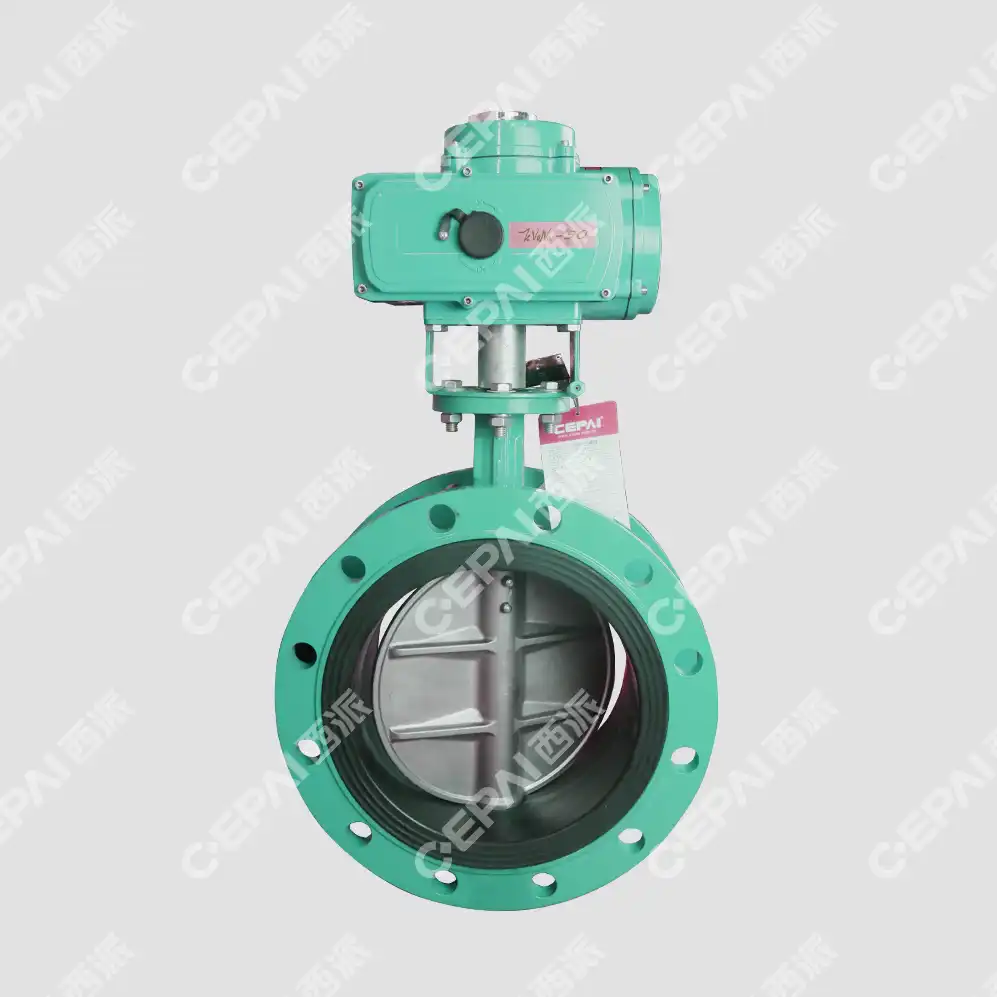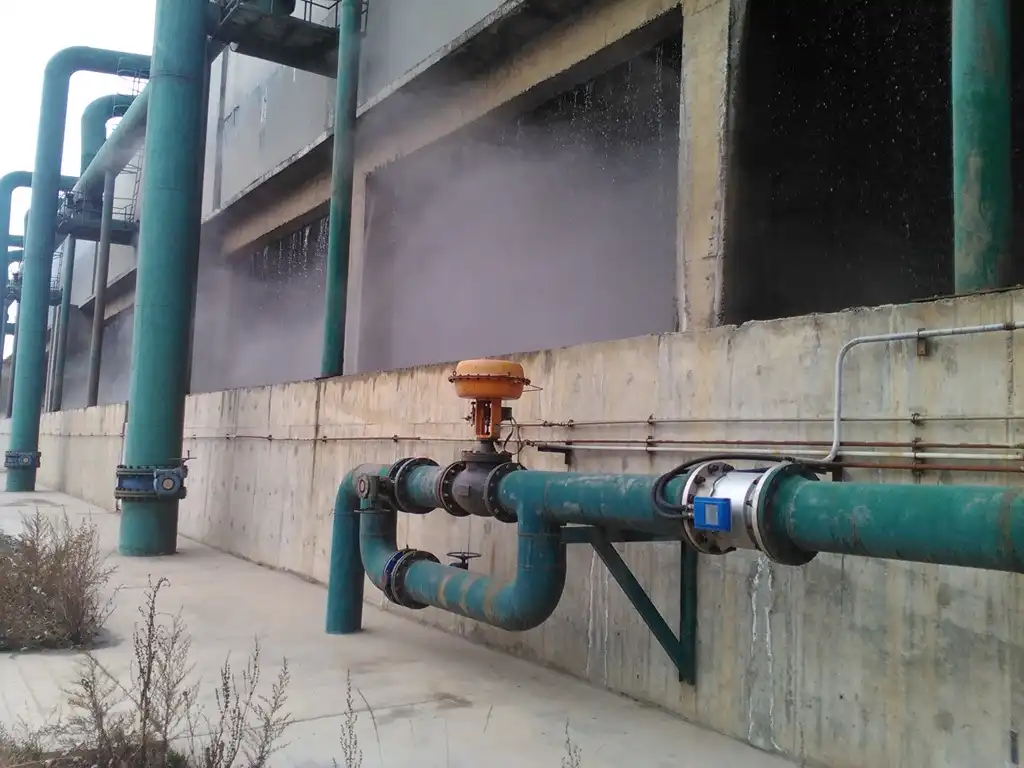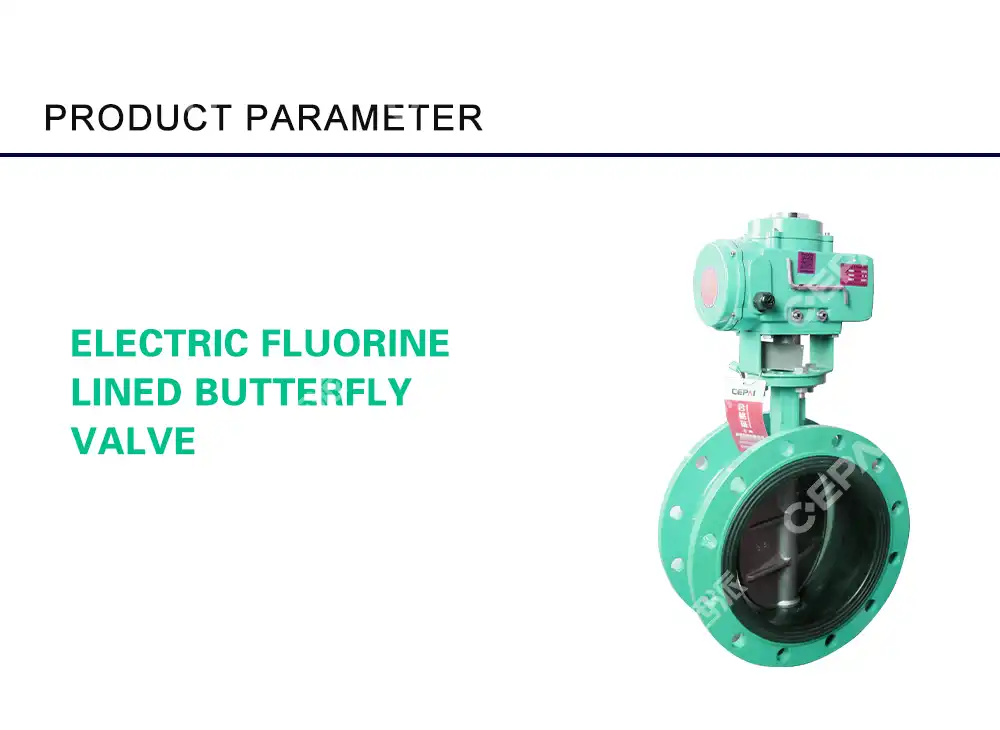Design and Operational Principles
Butterfly Valve Structure and Functionality
Butterfly valves are characterized by their simple yet effective design. The main component is a circular disc mounted on a rotating shaft. When the valve is fully open, the disc is parallel to the flow, allowing maximum fluid passage. As the disc rotates to the closed position, it blocks the flow path. This straightforward mechanism contributes to the valve's lightweight nature and compact design, making it an excellent choice for applications with space constraints.
The sealing mechanism in butterfly valves typically involves a rubber or elastomeric seat that lines the body of the valve. When the disc is in the closed position, it presses against this seat, creating a tight seal. This design allows for effective shutoff in both low and high-pressure applications, depending on the specific valve construction and materials used.
One of the key advantages of butterfly valves is their ability to modulate flow. By adjusting the disc's position between fully open and fully closed, operators can control the flow rate with reasonable precision. This feature makes butterfly valves particularly useful in applications requiring variable flow control, such as in HVAC systems or water treatment plants.
Plug Valve Construction and Operation
Plug valves, in contrast to butterfly valves, operate on a different principle. The main component is a tapered or cylindrical plug with a bore running through it. This plug sits in a matching tapered or cylindrical body. When the valve is open, the bore in the plug aligns with the flow path, allowing fluid to pass through. To close the valve, the plug is rotated 90 degrees, positioning the solid part of the plug across the flow path.
The sealing in plug valves is achieved through the close fit between the plug and the body, often enhanced by lubricants or sealants. This design allows for excellent sealing capabilities, particularly in high-pressure applications. Some plug valves are designed with expandable plugs that can be adjusted to maintain a tight seal as wear occurs over time.
Plug valves are known for their versatility in handling different types of media, including slurries and viscous fluids. They can be designed for multi-port configurations, allowing for complex flow routing options. This feature makes them popular in petrochemical plants and other industries where fluid diversion is frequently required.

Comparative Analysis of Design Impact on Performance
The design differences between butterfly and plug valves significantly impact their performance characteristics. Butterfly valves generally offer lower pressure drop when fully open due to their slim profile in the flow path. This characteristic makes them energy-efficient choices for applications where maintaining flow with minimal resistance is crucial.
Plug valves, while potentially creating more flow resistance when fully open, excel in providing tight shutoff. Their robust construction and sealing mechanism make them suitable for high-pressure applications and situations where zero leakage is critical. The ability of plug valves to handle abrasive or corrosive media also gives them an edge in certain industrial settings.
In terms of control precision, both valve types have their strengths. Butterfly valves offer good modulation capabilities, especially when equipped with actuators for precise positioning. Plug valves, while traditionally used for on-off service, can also be designed for throttling applications, though they may require more sophisticated control systems to achieve the same level of precision as butterfly valves.
Performance Characteristics and Applications
Flow Control and Regulation
Butterfly valves shine in applications requiring precise flow control. Their disc design allows for fine adjustment of flow rates, making them ideal for processes that demand variable flow regulation. In industries such as water treatment or chemical processing, butterfly valves can accurately control the flow of liquids or gases, ensuring optimal process efficiency.
The flow characteristics of butterfly valves are generally non-linear, with the most significant changes in flow occurring in the middle range of disc rotation. This non-linearity can be advantageous in certain applications but may require careful consideration in system design to ensure desired control outcomes.
Plug valves, while traditionally used for on-off applications, have evolved to offer good flow control capabilities as well. Advanced designs incorporate specially shaped plugs that provide more linear flow characteristics. This improvement makes modern plug valves suitable for applications requiring both tight shutoff and precise flow regulation.
Pressure Ratings and Temperature Tolerance
When it comes to pressure handling, both butterfly and plug valves have their strengths. High-performance butterfly valves can handle pressures up to 740 psi or more, depending on the specific design and materials used. These valves are particularly effective in low to medium pressure applications, where their lightweight construction and ease of operation provide significant advantages.
Plug valves, on the other hand, excel in high-pressure environments. Certain designs can withstand pressures exceeding 2000 psi, making them suitable for demanding industrial applications such as oil and gas pipelines. The robust construction of plug valves, particularly in lubricated or pressure-balanced designs, contributes to their ability to maintain tight seals under high pressure conditions.
Temperature tolerance is another critical factor in valve selection. Butterfly valves with appropriate seat materials can handle temperatures ranging from cryogenic conditions to over 1000°F. This wide temperature range makes them versatile for various applications, from LNG processing to steam systems. Plug valves, especially those with metal-to-metal seals, can also operate across a broad temperature spectrum, with some designs capable of withstanding temperatures up to 1500°F or more.

Industry-Specific Performance Considerations
In the oil and gas industry, both valve types find extensive use, but in different applications. Butterfly valves are often employed in lower pressure sections of refineries, such as in cooling water systems or product loading areas. Their quick opening and closing capabilities make them suitable for emergency shutdown systems as well.
Plug valves are prevalent in upstream oil and gas operations, where high pressure and the presence of abrasive materials are common. Their ability to provide tight shutoff and handle diverse media makes them indispensable in wellhead equipment and pipeline systems. In petrochemical plants, plug valves are often preferred for their ability to handle corrosive chemicals and provide reliable isolation.
The water and wastewater treatment industry frequently utilizes butterfly valves due to their excellent flow characteristics and cost-effectiveness in large diameter applications. Their ability to handle both clean and slightly contaminated water makes them versatile choices across various treatment processes.
Maintenance, Durability, and Cost Considerations
Maintenance Requirements and Procedures
Butterfly valves are known for their low maintenance requirements, contributing to their popularity in many industries. The simple design with fewer moving parts reduces the potential for mechanical failures. Regular maintenance typically involves checking the seat for wear, ensuring proper lubrication of the shaft, and verifying the integrity of the disc-to-seat seal. In most cases, these maintenance tasks can be performed without removing the valve from the line, minimizing downtime.
For butterfly valves used in critical applications, periodic testing of valve operation and leak tightness is essential. This can often be done through non-invasive methods such as acoustic emission testing or thermal imaging, further reducing the need for system shutdowns. When replacement of parts is necessary, the modular design of many butterfly valves allows for easy component swapping, often without specialized tools.
Plug valves, particularly lubricated types, may require more frequent maintenance to ensure optimal performance. Regular lubrication is crucial to maintain the seal between the plug and body, prevent galling, and ensure smooth operation. For non-lubricated plug valves, periodic inspection of the sealing surfaces and replacement of seals or gaskets may be necessary. The maintenance frequency for plug valves can vary significantly based on the specific design, operating conditions, and the media being handled.
Longevity and Wear Resistance
The durability of butterfly valves is largely dependent on the quality of materials used in their construction and the specific operating conditions. High-performance butterfly valves with corrosion-resistant alloys and advanced seat materials can offer extended service life, even in challenging environments. The relatively low mechanical stress on the valve components during operation contributes to their long-term reliability.
One potential wear point in butterfly valves is the seat, particularly in applications with frequent cycling or abrasive media. However, advancements in seat design and materials, such as reinforced PTFE or metal-backed seats, have significantly improved wear resistance. Some designs allow for in-situ seat replacement, further extending the valve's operational life.
Plug valves, especially those designed for severe service, can demonstrate exceptional longevity. The robust construction and ability to handle high pressures and temperatures make them suitable for long-term use in demanding applications. Lubricated plug valves, when properly maintained, can provide extended service life due to the protective and sealing properties of the lubricant.
In applications involving abrasive or corrosive media, the choice of valve materials becomes crucial for longevity. Both butterfly and plug valves can be manufactured with specialized alloys or coatings to enhance their resistance to wear and corrosion, tailoring their durability to specific operational requirements.
Cost-Benefit Analysis for Different Applications
When considering the overall cost-effectiveness of butterfly valves versus plug valves, several factors come into play. Initially, butterfly valves often have a lower procurement cost, especially in larger sizes. Their lightweight design also translates to reduced installation and support structure costs. The simplicity of butterfly valve design generally leads to lower maintenance costs over the life of the valve.
Plug valves, while potentially more expensive upfront, can offer long-term cost benefits in certain applications. Their durability and ability to handle demanding conditions can result in fewer replacements over time. In high-pressure or severe service applications, the initial higher cost of a plug valve may be offset by its longer service life and reduced likelihood of failure.
Energy efficiency is another important consideration in the cost-benefit analysis. The lower pressure drop characteristic of butterfly valves can lead to reduced pumping costs in systems where energy consumption is a significant factor. This advantage can result in substantial operational cost savings over time, particularly in large-scale industrial or municipal water systems.
For applications requiring frequent actuation, the lower torque requirements of butterfly valves can lead to savings in actuator costs and reduced energy consumption for valve operation. However, in applications where tight shutoff is critical, the superior sealing capabilities of plug valves may justify their higher initial cost by preventing costly leakages or product contamination.
Ultimately, the choice between butterfly and plug valves should be based on a comprehensive analysis of the specific application requirements, including operational conditions, maintenance capabilities, and long-term cost projections. Both valve types have their place in modern industrial systems, and selecting the right valve can significantly impact system performance and overall operational efficiency.
Conclusion
In comparing butterfly valves and plug valves, it's clear that each type excels in specific areas. Butterfly valves offer advantages in flow control, energy efficiency, and ease of maintenance, making them ideal for applications requiring frequent modulation and where space is limited. Plug valves shine in high-pressure environments, provide excellent shutoff capabilities, and are versatile in handling various media. The choice between these valve types ultimately depends on the specific requirements of your application, including pressure ratings, temperature ranges, and the nature of the media being controlled. By carefully considering these factors, you can select the valve that will provide the best performance and cost-effectiveness for your industrial processes.
Contact Us
For expert guidance on selecting the right valve for your specific needs, look no further than CEPAI Group. Our extensive range of high-quality valves, including advanced butterfly and plug valve designs, ensures optimal performance in even the most demanding applications. Benefit from our years of experience in oil and gas equipment manufacturing and our commitment to innovation. Contact us today at cepai@cepai.com to discuss how we can enhance your industrial processes with our cutting-edge valve solutions.


_1746598538016.webp)



